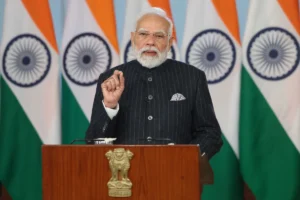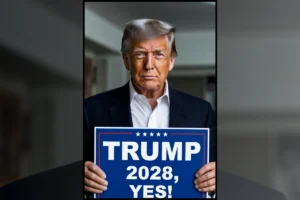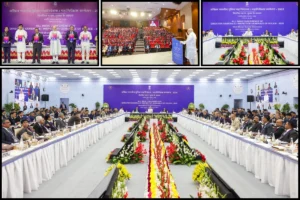
India is the world’s largest democracy, with over 1.3 billion people and a diverse and pluralistic society. India’s democratic system is based on the principle of federalism, which gives autonomy and power to the states to manage their own affairs, while the centre handles matters of national importance. India also follows the parliamentary form of government, where the executive is accountable to the legislature, and the people elect their representatives through periodic elections.
However, India’s democracy also faces many challenges and problems, such as corruption, criminalization, populism, policy paralysis, governance deficit, and electoral malpractices. One of the major reasons for these problems is the frequent and staggered elections that take place in India at different levels and times. India has a five-year term for both the Lok Sabha (the lower house of parliament) and the state assemblies, but due to various reasons such as dissolution, no-confidence motion, defection, or imposition of President’s rule, the terms may not coincide or last for the full duration. As a result, India witnesses elections almost every year, either for the Lok Sabha or for some state assemblies or local bodies.
These frequent and staggered elections have many adverse effects on India’s democracy and development. Some of these effects are:
- High cost of elections: According to a report by the Centre for Media Studies, the 2019 Lok Sabha elections cost Rs 60,000 crore, making it the most expensive election in the world. This amount includes the expenditure by the Election Commission of India (ECI), which was Rs 10,000 crore, and by the political parties and candidates, which was Rs 50,000 crore. This is a huge drain on public money and resources that could be used for other developmental purposes.
- Burden on administrative and security forces: The frequent elections also put a lot of pressure on the administrative and security forces, who have to ensure free and fair elections in a vast and diverse country like India. The ECI has to deploy over 10 million personnel, including civil servants, police officers, paramilitary forces, and volunteers, to conduct elections. The security forces have to deal with various challenges such as violence, terrorism, naxalism, communalism, and separatism during elections. The administrative machinery also gets diverted from its normal duties of governance and service delivery during elections.
- Policy disruption and governance deficit: The frequent elections also disrupt the policy-making and implementation process of both the central and state governments. The ECI imposes the Model Code of Conduct (MCC) whenever elections are announced, which restricts the government from announcing or launching any new schemes or projects that may influence the voters. This affects the continuity and consistency of policies and programs of the government. The government also tends to focus more on electoral politics than on governance and development during elections. The frequent elections also create uncertainty and instability in the political system, as the government may lose its majority or face a hung parliament or a coalition at any time.
- Corruption and criminalization of politics: The frequent elections also encourage corruption and criminalization of politics in India. The political parties and candidates need huge amounts of money to contest elections, which they often raise from illegal or dubious sources such as black money, corporate donations, foreign funding, or extortion. This creates a nexus between politicians, businessmen, criminals, and bureaucrats, who indulge in various scams, scandals, and malpractices to serve their vested interests. The frequent elections also increase the chances of electoral frauds such as booth capturing, voter impersonation, rigging, intimidation, bribery, or violence.
- Populism and polarization of politics: The frequent elections also promote populism and polarization of politics in India. The political parties and candidates tend to make unrealistic promises or offer freebies or subsidies to woo the voters during elections. This leads to fiscal indiscipline and wasteful expenditure by the government. The frequent elections also create a divide between national and regional issues, as well as between different communities such as caste, religion, language, or ethnicity. This leads to communalism, regionalism, and separatism in politics.
In order to overcome these problems and improve India’s democracy and development, many political leaders, including Prime Minister Narendra Modi, have proposed the idea of “one nation, one election”. This idea refers to holding simultaneous elections for both the Lok Sabha and the state assemblies at once, instead of having them at different times as per the current practice. This idea was first suggested by the Law Commission in its 170th report in 1999, and later endorsed by the Election Commission in 2015, the NITI Aayog in 2017, and the Parliamentary Standing Committee on Personnel, Public Grievances, Law and Justice in 2018.
The idea of “one nation, one election” has many benefits for India’s democracy and development. Some of these benefits are:
- Reduced cost of elections: The simultaneous elections would reduce the cost of elections significantly, as the expenditure by the ECI, the political parties, and the candidates would be incurred only once in five years, instead of multiple times. According to a report by the NITI Aayog, the simultaneous elections would save Rs 4,500 crore for the ECI and Rs 30,000 crore for the political parties and candidates. This would free up public money and resources for other developmental purposes.
- Reduced burden on administrative and security forces: The simultaneous elections would also reduce the burden on the administrative and security forces, as they would have to conduct elections only once in five years, instead of multiple times. This would ease the pressure on the civil servants, police officers, paramilitary forces, and volunteers, who would be able to focus on their normal duties of governance and service delivery. The security forces would also be able to deal with various challenges such as violence, terrorism, naxalism, communalism, and separatism more effectively.
- Policy continuity and governance efficiency: The simultaneous elections would also ensure policy continuity and governance efficiency of both the central and state governments. The ECI would not have to impose the MCC frequently, which would allow the government to announce or launch new schemes or projects without any hindrance. This would enhance the continuity and consistency of policies and programs of the government. The government would also be able to focus more on governance and development than on electoral politics. The simultaneous elections would also create certainty and stability in the political system, as the government would have a fixed term of five years, without any fear of losing its majority or facing a hung parliament or a coalition.
- Curbing corruption and criminalization of politics: The simultaneous elections would also help in curbing corruption and criminalization of politics in India. The political parties and candidates would need less money to contest elections, which would reduce their dependence on illegal or dubious sources of funding. This would break the nexus between politicians, businessmen, criminals, and bureaucrats, who indulge in various scams, scandals, and malpractices. The simultaneous elections would also reduce the chances of electoral frauds such as booth capturing, voter impersonation, rigging, intimidation, bribery, or violence.
- Reducing populism and polarization of politics: The simultaneous elections would also help in reducing populism and polarization of politics in India. The political parties and candidates would not be able to make unrealistic promises or offer freebies or subsidies to woo the voters during elections. This would lead to fiscal discipline and rational expenditure by the government. The simultaneous elections would also bridge the gap between national and regional issues, as well as between different communities such as caste, religion, language, or ethnicity. This would foster communal harmony, national integration, and cooperative federalism in politics.
The idea of “one nation, one election” is not a new one. It was practiced in India until 1967, when separate elections for the Lok Sabha and the state assemblies began due to various reasons. Since then, several committees and commissions have studied this idea and given their recommendations. However, there is no consensus among the political parties, experts, or civil society on this issue. Therefore, it is important to have a wide-ranging and inclusive dialogue on this idea before taking any decision.
Conclusion
The idea of “one nation, one election” is a reform for India’s democracy that aims at making it more efficient, effective, and accountable. It has many advantages for India’s development, such as saving cost, time, and resources; ensuring policy continuity and governance efficiency; curbing corruption and criminalization; reducing populism and polarization; and fostering national integration and cooperative federalism. However, it also has some challenges and drawbacks, such as requiring constitutional amendments; affecting voter choice and awareness; weakening opposition parties and their role; undermining federal structure and regional diversity; and creating a homogenous and monolithic political culture. Therefore, it is essential to weigh the pros and cons of this idea carefully before implementing it.
One Nation, One Election: A Reform for India’s Democracy
India is the world’s largest democracy, with over 1.3 billion people and a diverse and pluralistic society. India’s democratic system is based on the principle of federalism, which gives autonomy and power to the states to manage their own affairs, while the centre handles matters of national importance. India also follows the parliamentary form of government, where the executive is accountable to the legislature, and the people elect their representatives through periodic elections.
However, India’s democracy also faces many challenges and problems, such as corruption, criminalization, populism, policy paralysis, governance deficit, and electoral malpractices. One of the major reasons for these problems is the frequent and staggered elections that take place in India at different levels and times. India has a five-year term for both the Lok Sabha (the lower house of parliament) and the state assemblies, but due to various reasons such as dissolution, no-confidence motion, defection, or imposition of President’s rule, the terms may not coincide or last for the full duration. As a result, India witnesses elections almost every year, either for the Lok Sabha or for some state assemblies or local bodies.
These frequent and staggered elections have many adverse effects on India’s democracy and development. Some of these effects are:
- High cost of elections: According to a report by the Centre for Media Studies, the 2019 Lok Sabha elections cost Rs 60,000 crore, making it the most expensive election in the world. This amount includes the expenditure by the Election Commission of India (ECI), which was Rs 10,000 crore, and by the political parties and candidates, which was Rs 50,000 crore. This is a huge drain on public money and resources that could be used for other developmental purposes.
- Burden on administrative and security forces: The frequent elections also put a lot of pressure on the administrative and security forces, who have to ensure free and fair elections in a vast and diverse country like India. The ECI has to deploy over 10 million personnel, including civil servants, police officers, paramilitary forces, and volunteers, to conduct elections. The security forces have to deal with various challenges such as violence, terrorism, naxalism, communalism, and separatism during elections. The administrative machinery also gets diverted from its normal duties of governance and service delivery during elections.
- Policy disruption and governance deficit: The frequent elections also disrupt the policy-making and implementation process of both the central and state governments. The ECI imposes the Model Code of Conduct (MCC) whenever elections are announced, which restricts the government from announcing or launching any new schemes or projects that may influence the voters. This affects the continuity and consistency of policies and programs of the government. The government also tends to focus more on electoral politics than on governance and development during elections. The frequent elections also create uncertainty and instability in the political system, as the government may lose its majority or face a hung parliament or a coalition at any time.
- Corruption and criminalization of politics: The frequent elections also encourage corruption and criminalization of politics in India. The political parties and candidates need huge amounts of money to contest elections, which they often raise from illegal or dubious sources such as black money, corporate donations, foreign funding, or extortion. This creates a nexus between politicians, businessmen, criminals, and bureaucrats, who indulge in various scams, scandals, and malpractices to serve their vested interests. The frequent elections also increase the chances of electoral frauds such as booth capturing, voter impersonation, rigging, intimidation, bribery, or violence.
- Populism and polarization of politics: The frequent elections also promote populism and polarization of politics in India. The political parties and candidates tend to make unrealistic promises or offer freebies or subsidies to woo the voters during elections. This leads to fiscal indiscipline and wasteful expenditure by the government. The frequent elections also create a divide between national and regional issues, as well as between different communities such as caste, religion, language, or ethnicity. This leads to communalism, regionalism, and separatism in politics.
In order to overcome these problems and improve India’s democracy and development, many political leaders, including Prime Minister Narendra Modi, have proposed the idea of “one nation, one election”. This idea refers to holding simultaneous elections for both the Lok Sabha and the state assemblies at once, instead of having them at different times as per the current practice. This idea was first suggested by the Law Commission in its 170th report in 1999, and later endorsed by the Election Commission in 2015, the NITI Aayog in 2017, and the Parliamentary Standing Committee on Personnel, Public Grievances, Law and Justice in 2018.
The idea of “one nation, one election” has many benefits for India’s democracy and development. Some of these benefits are:
- Reduced cost of elections: The simultaneous elections would reduce the cost of elections significantly, as the expenditure by the ECI, the political parties, and the candidates would be incurred only once in five years, instead of multiple times. According to a report by the NITI Aayog, the simultaneous elections would save Rs 4,500 crore for the ECI and Rs 30,000 crore for the political parties and candidates. This would free up public money and resources for other developmental purposes.
- Reduced burden on administrative and security forces: The simultaneous elections would also reduce the burden on the administrative and security forces, as they would have to conduct elections only once in five years, instead of multiple times. This would ease the pressure on the civil servants, police officers, paramilitary forces, and volunteers, who would be able to focus on their normal duties of governance and service delivery. The security forces would also be able to deal with various challenges such as violence, terrorism, naxalism, communalism, and separatism more effectively.
- Policy continuity and governance efficiency: The simultaneous elections would also ensure policy continuity and governance efficiency of both the central and state governments. The ECI would not have to impose the MCC frequently, which would allow the government to announce or launch new schemes or projects without any hindrance. This would enhance the continuity and consistency of policies and programs of the government. The government would also be able to focus more on governance and development than on electoral politics. The simultaneous elections would also create certainty and stability in the political system, as the government would have a fixed term of five years, without any fear of losing its majority or facing a hung parliament or a coalition.
- Curbing corruption and criminalization of politics: The simultaneous elections would also help in curbing corruption and criminalization of politics in India. The political parties and candidates would need less money to contest elections, which would reduce their dependence on illegal or dubious sources of funding. This would break the nexus between politicians, businessmen, criminals, and bureaucrats, who indulge in various scams, scandals, and malpractices. The simultaneous elections would also reduce the chances of electoral frauds such as booth capturing, voter impersonation, rigging, intimidation, bribery, or violence.
- Reducing populism and polarization of politics: The simultaneous elections would also help in reducing populism and polarization of politics in India. The political parties and candidates would not be able to make unrealistic promises or offer freebies or subsidies to woo the voters during elections. This would lead to fiscal discipline and rational expenditure by the government. The simultaneous elections would also bridge the gap between national and regional issues, as well as between different communities such as caste, religion, language, or ethnicity. This would foster communal harmony, national integration, and cooperative federalism in politics.
The idea of “one nation, one election” is not a new one. It was practiced in India until 1967, when separate elections for the Lok Sabha and the state assemblies began due to various reasons. Since then, several committees and commissions have studied this idea and given their recommendations. However, there is no consensus among the political parties, experts, or civil society on this issue. Therefore, it is important to have a wide-ranging and inclusive dialogue on this idea before taking any decision.
Conclusion
The idea of “one nation, one election” is a reform for India’s democracy that aims at making it more efficient, effective, and accountable. It has many advantages for India’s development, such as saving cost, time, and resources; ensuring policy continuity and governance efficiency; curbing corruption and criminalization; reducing populism and polarization; and fostering national integration and cooperative federalism. However, it also has some challenges and drawbacks, such as requiring constitutional amendments; affecting voter choice and awareness; weakening opposition parties and their role; undermining federal structure and regional diversity; and creating a homogenous and monolithic political culture. Therefore, it is essential to weigh the pros and cons of this idea carefully before implementing it.



















